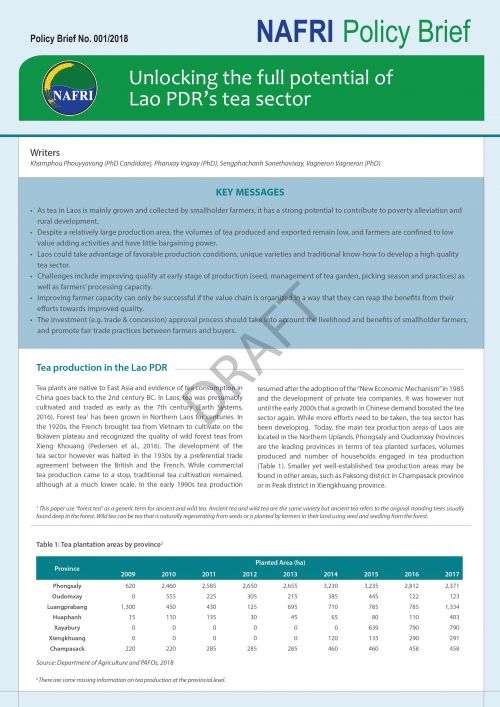
Tea plants are native to East Asia and evidence of tea consumption in China goes back to the 2nd century BC. In Laos, tea was presumably cultivated and traded as early as the 7th century (Earth Systems, 2016). Forest tea1 has been grown in Northern Laos for centuries. In the 1920s, the French brought tea from Vietnam to cultivate on the
Bolaven plateau and recognized the quality of wild forest teas from Xieng Khouang (Pedersen et al., 2016). The development of the tea sector however was halted in the 1930s by a preferential trade agreement between the British and the French. While commercial tea production came to a stop, traditional tea cultivation remained, although at a much lower scale. In the early 1990s tea production resumed after the adoption of the “New Economic Mechanism” in 1985 and the development of private tea companies. It was however not until the early 2000s that a growth in Chinese demand boosted the tea sector again. While more e"orts need to be taken, the tea sector has been developing. Today, the main tea production areas of Laos are located in the Northern Uplands. Phongsaly and Oudomxay Provinces are the leading provinces in terms of tea planted surfaces, volumes produced and number of households engaged in tea production. Smaller yet well-established tea production areas may be found in other areas, such as Paksong district in Champasack province or in Peak district in Xiengkhuang province.
